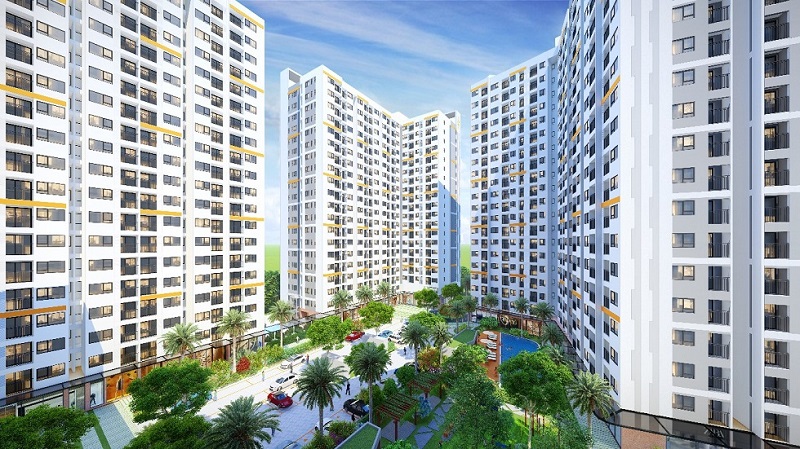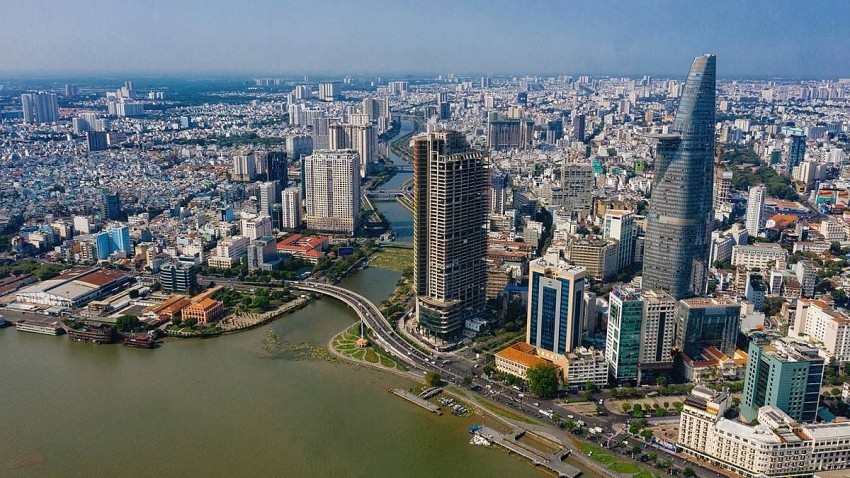Vietnam’s real estate market is set to take off in 2025, fueled by fresh momentum from policy changes, updated laws, and major infrastructure projects. Experts said this presents a huge opportunity for investors.
Public investment as a key driver in 2025
According to experts at Nha Tot, a real estate platform, Government policies and legal frameworks are the primary catalysts for real estate market growth in 2025. Real estate supply is closely tied to land and housing management, land use policies, and industry development investments.
Furthermore, the completion and launch of several major infrastructure projects will significantly boost the market. For instance, HCMC’s Tan Son Nhat International Airport’s Terminal T3 is slated for completion on April 30, and HCMC Beltway No. 3 is expected to be opened to traffic in June, both promising exciting new investment prospects.
Many experts agree that major transport infrastructure investments like highways, beltways, and the metro system are already having a positive impact, strengthening HCMC’s connections with surrounding areas. These improvements are not just cutting travel times; they are also making these areas more attractive, creating compelling investment opportunities for both homebuyers and real estate investors.
Residents will benefit from smoother commutes within the next two to three years as key transport projects, particularly metro lines, are completed and ease traffic between Ho Chi Minh City and its neighboring areas. This will likely spark a market shift, with people prioritizing more spacious living in satellite cities over the hustle and bustle of downtown HCMC.
“This trend will spur satellite city development, not just in infrastructure and amenities but also in the quality of life, ushering in a new era of housing preferences where satellite cities become the top choice for residents both within and outside the region,” according to an expert from Nha Tot (1).
Additionally, experts predict interest rates would remain low, making it easier for homebuyers to finance property purchases with less financial strain. This is particularly important, as the rising costs of Construction and development make significant price drops unlikely in the increasingly competitive market.
Finally, the underlying demand for housing remains strong, despite rising real estate prices. DXS-FERI data shows that in the first half of 2024, transactions from genuine homebuyers accounted for a substantial 69%, compared to just 25% for investment and speculative purchases, highlighting the market’s focus on real needs. Nha Tot anticipates this trend continuing into 2025 (2).
Dinh Minh Tuan, southern regional director of Batdongsan.com.vn, said that policies and regulations, including the Land Law, the Real Estate Business Law, and the Housing Law, are gradually shaping the market through measures like updated land price lists and stricter developer requirements. The Government’s push for major infrastructure projects, such as railways, highways, and airports, is also seen as a powerful catalyst for market growth in the coming year. Furthermore, as the remaining issues surrounding real estate corporate bonds are resolved, stable interest rates will make it easier for buyers to access properties and ease financial pressures.

Tuan also pointed out that in 2025, projects catering to real housing needs will likely make a comeback. Apartment buildings, currently offering stable prices, will likely lead the way, followed by detached houses. The townhouse market is also showing signs of recovery as major brands and homeowners adjust rental prices and offer better terms for renters.
With a strong recovery in real housing demand, the apartment segment is poised to maintain its leadership position, especially with supportive policies and improved transportation infrastructure. People are increasingly seeking spacious and airy living in satellite cities rather than the fast-paced city center. The western part of HCMC is emerging as a real estate hotspot, benefiting from major infrastructure projects like the Ben Luc–Long Thanh Expressway, HCMC Beltway 3, and the planned expansion of National Highway 1A, optimizing available land and boosting liquidity. The Destino Centro project, located on National Highway 1A just five minutes from the Ben Luc–Long Thanh Expressway, exemplifies this trend. This project features a comprehensive array of modern amenities, with four swimming pools, a bustling commercial district, a spacious 1,500 square-meter international kindergarten, and community spaces where traditional charm meets contemporary design. The involvement of renowned design firms like Korn Architects and GK Archi further underscores Destino Centro’s quality and long-term value.
Overall, with new policies and laws in place, and transport infrastructure upgraded, the apartment segment is set to drive the market forward. 2025 promises a new phase of growth for Vietnam’s real estate sector. These factors are not only reshaping the market landscape but also creating attractive investment opportunities for those seeking sustainable and smart investments in 2025.
(1) https://vietstock.vn/2025/01/trong-cho-gi-vao-thi-truong-bat-dong-san-2025-4220-1256378.htm
(2) https://vietstock.vn/2025/01/trong-cho-gi-vao-thi-truong-bat-dong-san-2025-4220-1256378.htm










